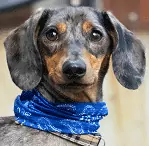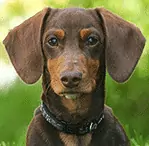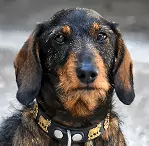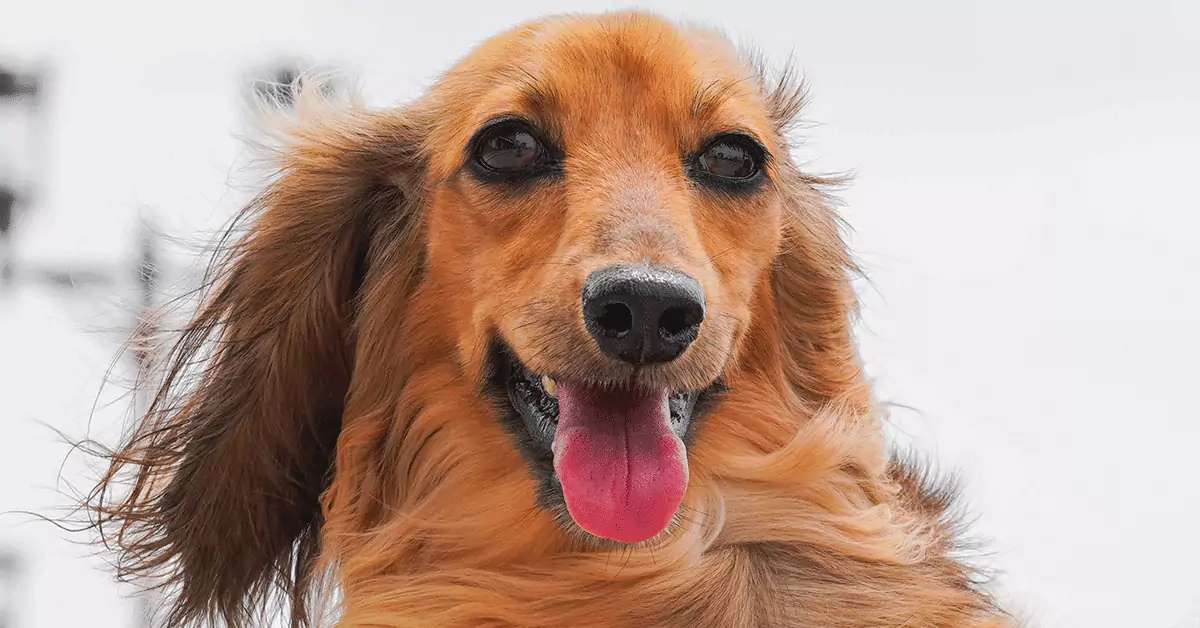
Meet the Dachshund
Top Watch Dog
Apartment Friendly
Daring Doggo
My Many Looks
My Breed Characteristics
Furbulous Fact
As I Grow Up
History of My Breed
Care Tips
Training Tips
Personality
Adventurous
Alert
Spunky
Group
Hound
Origin
Germany
Life Span
12-16 years
Breed Popularity
#10 of 195
Height Range
8-9 inches (miniature: 5-6 inches)
Weight Range
16-32 pounds (miniature: 11 pounds & under)
Coat Details
Type
Wirehaired, or Longhaired
Texture
Straight & Smooth to Slightly Wavy
Features
Hard Outer Coat w/ Softer Undercoat (Wirehaired Variety)
Colors
Black & Cream, Black & Tan, Blue & Cream, Blue & Tan, Chocolate &
Hypoallergenic
Cost to Buy
$295-$1,125
Lifetime Care Cost
$17,845
My Many Looks
My Breed Characteristics
Furbulous Fact
As I Grow Up
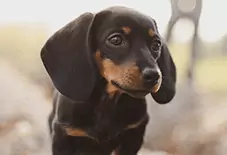
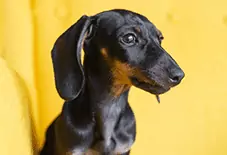
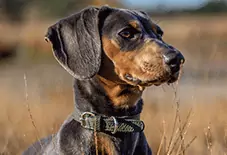
History of My Breed
Care Tips
from Dr. Jessica Greenberg, Associate VeterinarianWatch your Dachshund’s back.
Dachshunds are most at risk for intervertebral disc disease (IVDD), similar to slipped or herniated discs in humans. If you start to observe signs of back pain, discomfort, weakness, or difficulty rising from a seated position, you want to get your pup checked out by your vet as soon as possible to prevent it from causing more severe issues like paralysis. - Dr. Marc Elie, Veterinarian
Keep your weiner dog’s weight in check.
Dachshunds are particularly prone to obesity, which can increase their risk of developing IVDD and other health issues. Make sure you give your pup regular exercise and a strict diet, which you may need to tailor as they get older and less active. If you’re concerned about your dog’s weight, talk to your vet about a metabolic diet to ensure they’re getting the right calories and meeting their nutritional needs. - Dr. Marc Elie, Veterinarian
Take care of your pup’s pearly whites.
Dental disease affects 80% of all dogs and occurs when tartar buildup on the teeth becomes so overwhelming that it causes infection in the gums and roots of the teeth. Dachshunds are more likely than other breeds to experience dental problems like dental disease, so take your pup for regular professional dental cleanings and exams to avoid any complications with their teeth. - Dr. Jessica Greenberg, Associate Veterinarian
Training Tips
from Dr. Jessica Greenberg, Associate VeterinarianBe careful not to bark WITH your dog.
These hounds can be very vocal – they love to sing! If you’re trying to coach your Dachshund to stop barking, don’t yell or raise your voice at the dog when they’re making noise. If you do, you’re just reinforcing the bark behavior by barking with them. Instead, wait for them to finish, and reward them with treats and affection once they’ve quieted down.
Walk your Dachshund with a harness.
Dachshunds are low-riders, with short legs and a long spine. The less pressure put on their necks during walks – the better! So instead of walking them with a standard collar and a leash, try fitting them with a harness to distribute the pressure more evenly, making walks more comfortable for their unique body types.
Help your Doxie hop onto elevated surfaces.
These tiny pups are huge cuddle bugs, but jumping on and off of high surfaces can cause damage to the joints and bones. Considering Doxie’s little legs and long backs, it’s important to avoid any excess pressure or tension to their spine and legs. Use treats to teach your Dachshund how to walk up stable pet furniture ramps for safe access to an elevated bed or couch.
My Many Looks
My Breed Characteristics
Furbulous Fact
As I Grow Up
History of My Breed
Care Tips
Training Tips
-
Personality
Adventurous
Alert
Spunky
-
Group
Hound
-
Origin
Germany
-
Life Span
12-16 years
-
Breed Popularity
#10 of 195
-
Height Range
8-9 inches (miniature: 5-6 inches)
-
Weight Range
16-32 pounds (miniature: 11 pounds & under)
-
动物皮毛
Type
Wirehaired, or Longhaired
Texture
Straight & Smooth to Slightly Wavy
Features
Hard Outer Coat w/ Softer Undercoat (Wirehaired Variety)
Colors
Black & Cream, Black & Tan, Blue & Cream, Blue & Tan, Chocolate &
-
Hypoallergenic
-
Cost to Buy
$295-$1,125
-
Lifetime Care Cost
$17,845
